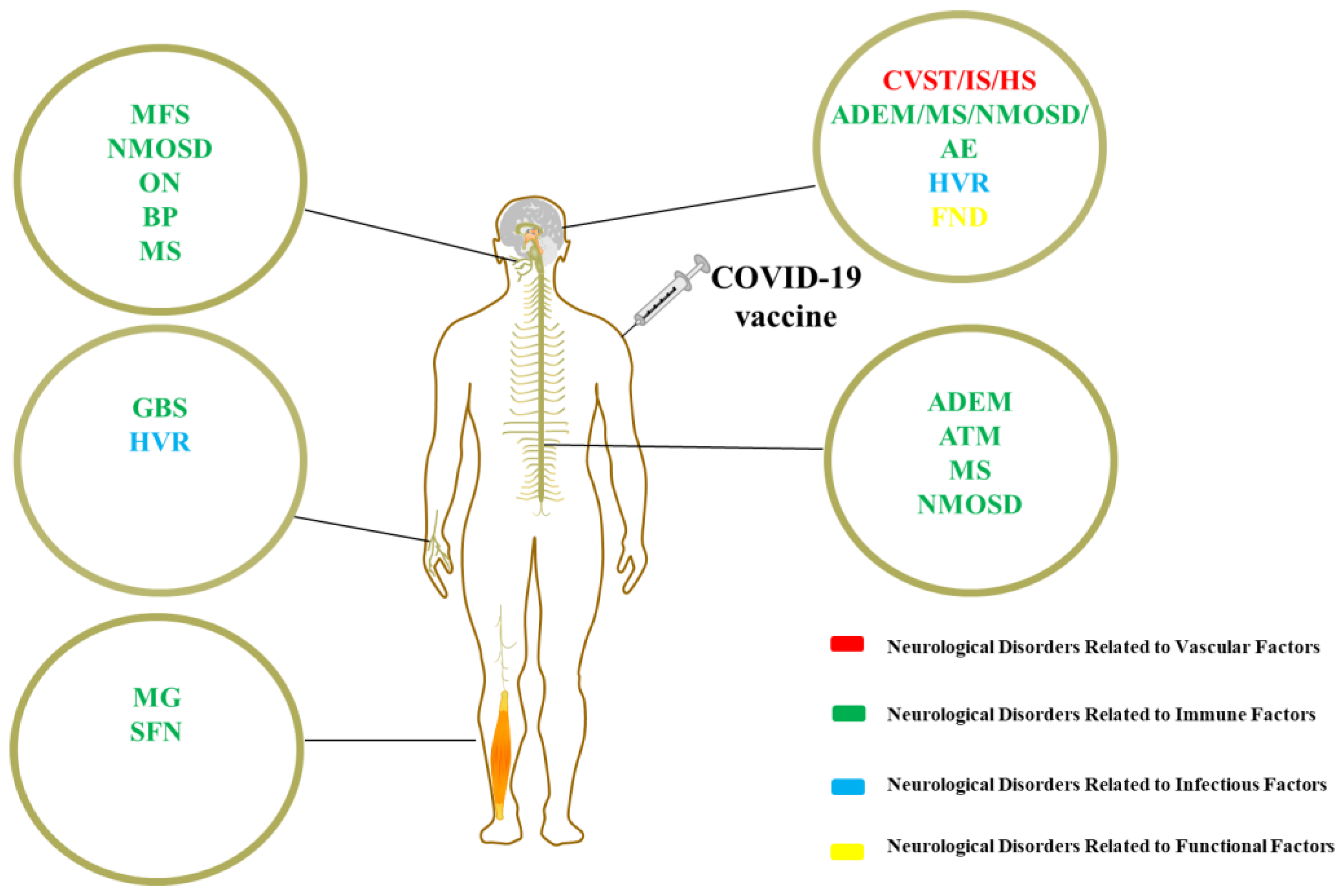The disorder that involves the vertebrae is known as spinal disorders. Spinal disorders affect the vertebrae, which are the small bones that make up the backbone.
These disorders can range from minor conditions such as spinal misalignment to more serious issues like herniated discs or spinal stenosis. Spinal disorders can cause pain, limited mobility, and other complications that can affect a person’s daily life. It is important to seek medical attention if you suspect you may have a spinal disorder, as early diagnosis and treatment can help prevent further complications and improve overall quality of life.

Credit: www.cell.com
Involves the Vertebrae: An Overview Of Disorders Involving The Vertebrae
Disorders involving the vertebrae include scoliosis, kyphosis, and lordosis. Both genetic and environmental factors can contribute to these conditions. They can cause pain, limited mobility, and other complications, and treatment often involves a combination of physical therapy, bracing, and sometimes surgery.
The human spinal column is a remarkable structure made up of a series of individual bones known as vertebrae. These vertebrae not only provide support and protection for the spinal cord but also allow for flexibility and movement. However, various disorders can affect the vertebrae, leading to pain, discomfort, and limited mobility. In this article, we will provide an overview of some of the common vertebrae disorders, their causes, symptoms, and potential treatment options.
Common Vertebrae Disorders
1. Scoliosis:
Scoliosis is a condition characterized by an abnormal sideways curvature of the spine. It can occur in children, adolescents, and adults, and its severity can range from mild to severe. Although the exact cause of scoliosis is unknown in most cases, it can be associated with genetic factors, muscle imbalances, or neuromuscular conditions. Symptoms may include an uneven waistline, one shoulder being higher than the other, and back pain.
2. Herniated Disk:
A herniated disk, also known as a slipped or ruptured disk, happens when the soft inner core of the vertebral disk bulges or pushes through the outer ring. This can irritate nearby nerves, causing pain, numbness, or weakness in the affected area. Herniated disks most commonly occur in the lower back or neck regions and can be caused by injury, aging, or repetitive motion.
3. Spinal Stenosis:
Spinal stenosis is a condition characterized by the narrowing of the spinal canal, which can put pressure on the spinal cord and nerves. This narrowing can occur in the neck (cervical stenosis) or lower back (lumbar stenosis). Common causes include aging, arthritis, or genetic factors. Symptoms may include pain or numbness in the legs, difficulty walking, and decreased sensation or coordination.
4. Degenerative Disc Disease:
Degenerative disc disease refers to the gradual breakdown of the intervertebral discs that cushion the spinal vertebrae. This condition is primarily associated with aging and can result in pain, stiffness, and limited movement. Factors such as smoking, obesity, and physical labor can increase the risk of developing degenerative disc disease.
5. Spinal Fractures:
Spinal fractures involve the breakage or collapse of one or more vertebrae. These fractures can occur as a result of trauma, osteoporosis, cancer, or certain medical conditions. Symptoms include severe back pain, difficulty walking, and loss of bladder or bowel control. Treatment options range from conservative measures such as rest and pain medication to more invasive procedures like spinal fusion or vertebroplasty.
Understanding these common vertebrae disorders can help individuals recognize the signs and seek appropriate medical attention if needed. While some conditions can be managed with conservative treatments, others may require more intensive interventions. If you suspect you have a vertebrae disorder or are experiencing persistent back or neck pain, it is essential to consult with a healthcare professional to determine the underlying cause and establish an effective treatment plan.
Symptoms And Diagnosis
When it comes to disorders involving the vertebrae, it’s essential to understand the symptoms and diagnostic methods used to identify and address these conditions. Recognizing the symptoms, followed by a thorough medical examination and diagnostic procedures, is crucial in providing the appropriate treatment and care for individuals affected by these spinal disorders.
Identifying Symptoms
Common symptoms associated with vertebrae disorders may include:
- Persistent back pain
- Difficulty walking or standing
- Numbness or tingling in the extremities
- Limited range of motion
Identifying these symptoms can help in early detection and management of the disorder.
Medical Examination And Diagnostic Procedures
When diagnosing disorders involving the vertebrae, medical professionals may utilize various examination and diagnostic procedures:
- Physical examination to assess range of motion and neurological function
- Imaging tests such as X-rays, MRIs, or CT scans to visualize the spine and detect any abnormalities
- Diagnostic injections or nerve blocks to determine the source of pain
These procedures enable healthcare providers to accurately diagnose and develop a targeted treatment plan for patients with vertebrae-related disorders.
Treatment Options
Disorders involving the vertebrae can be treated through various medical interventions like medication, physical therapy, and even surgery. Depending on the severity of the condition, treatment options can be customized to address individual needs and provide relief.
When it comes to disorders involving the vertebrae, there are various treatment options available depending on the severity of the condition. These treatment options can be categorized into two main categories: conservative treatments and surgical interventions. Let’s take a closer look at each of these options.
Conservative Treatments
Conservative treatments, also known as non-surgical treatments, are usually the first line of defense in addressing disorders involving the vertebrae. These treatments focus on relieving symptoms, promoting healing, and improving the patient’s overall quality of life. Here are some common conservative treatment options:
1. Medication: Pain relievers, muscle relaxants, and anti-inflammatory drugs may be prescribed to manage pain and reduce inflammation in the affected area.
2. Physical Therapy: Physical therapy aims to improve strength, flexibility, and stability in the spine through targeted exercises, stretches, and other therapeutic techniques. This can help alleviate pain, improve mobility, and prevent further damage.
3. Chiropractic Care: Chiropractic care involves spinal adjustments, manipulation, and other manual therapies to restore proper alignment and alleviate pain. It is particularly effective for conditions such as herniated discs and spinal misalignments.
4. Bracing or Supports: In some cases, wearing a brace or support can provide stability and relieve pressure on the affected area. This may be recommended for conditions like scoliosis or spinal fractures.
5. Lifestyle Modifications: Making certain lifestyle changes can have a significant impact on managing and preventing further complications. This can include maintaining a healthy weight, improving posture, and taking regular breaks from sedentary activities.
Surgical Interventions
In more severe cases, when conservative treatments fail to provide sufficient relief or when the condition is causing significant functional impairment, surgical interventions may be considered. These procedures aim to address the underlying issue and alleviate symptoms. Some common surgical interventions for disorders involving the vertebrae include:
1. Discectomy: This procedure involves the removal of herniated disc material that is pressing on spinal nerves, causing pain and other symptoms. It can be performed through traditional open surgery or minimally invasive techniques.
2. Spinal Fusion: Spinal fusion is a surgical procedure that involves the joining or “fusing” of two or more vertebrae using bone grafts or implants. This stabilizes the spine and reduces pain caused by conditions such as spinal degeneration or spinal deformities.
3. Laminectomy: In a laminectomy, part of the lamina (bony arches of the vertebrae) is removed to relieve pressure on the spinal cord or nerves. This procedure is often performed to treat conditions like spinal stenosis or spinal tumors.
4. Vertebroplasty or Kyphoplasty: These minimally invasive procedures are used to treat vertebral compression fractures caused by osteoporosis or trauma.
They involve injecting cement-like material into the affected vertebrae to stabilize the fracture and relieve pain. Surgical interventions are typically considered when conservative treatments have been exhausted or when the condition is significantly impacting the patient’s quality of life.
It is important to consult with a healthcare professional to determine the most appropriate treatment plan based on individual circumstances and needs.

Credit: www.mdpi.com
Prevention And Management
Disorders involving the vertebrae require proper prevention and management. It is crucial to focus on maintaining spinal health to avoid complications. Strategically managing these disorders can help individuals lead a pain-free life.
Maintaining Good Posture
One crucial aspect of preventing and managing disorders involving the vertebrae is maintaining good posture. Poor posture can put excessive strain on the vertebrae and lead to various spinal conditions. To maintain good posture, it is essential to:
- Sit up straight with your back supported by a chair, keeping your feet flat on the floor.
- Avoid slouching or hunching over while standing or sitting for prolonged periods.
- Ensure that your computer screen is at eye level, and your keyboard and mouse are within easy reach to avoid straining your neck and shoulders.
- Use ergonomic furniture and supports, such as lumbar cushions or standing desks, to promote proper alignment of the spine.
- Take regular breaks and perform postural exercises to relieve muscle tension and maintain a healthy posture throughout the day.
Regular Exercise And Stretching
In addition to maintaining good posture, regular exercise and stretching can play a vital role in preventing and managing disorders related to the vertebrae. Exercise helps strengthen the muscles that support the spine, improving its stability and reducing the risk of injuries or conditions like:
| Exercise Type | Benefits |
|---|---|
| Aerobic exercises (walking, swimming, cycling) | Improves blood circulation, strengthens core muscles, and promotes overall fitness. |
| Strength training (weightlifting, resistance band exercises) | Builds muscle strength, supports the spine, and enhances posture. |
| Flexibility exercises (yoga, Pilates, stretching) | Increases flexibility, relieves muscle tension and enhances range of motion in the spine. |
| Pilates method | Develops core strength, improves posture, and strengthens the muscles surrounding the spine. |
Engaging in these types of exercises, under professional guidance, can help prevent spinal disorders and alleviate associated symptoms in individuals of all ages.

Credit: www.merckmanuals.com
Conclusion
Understanding the disorders involving the vertebrae is crucial for maintaining spinal health. By knowing the symptoms, causes, and treatment options for conditions like scoliosis, kyphosis, and spondylolisthesis, individuals can take proactive steps to address any issues related to their vertebrae.
Prioritizing spinal health is essential for overall well-being.
